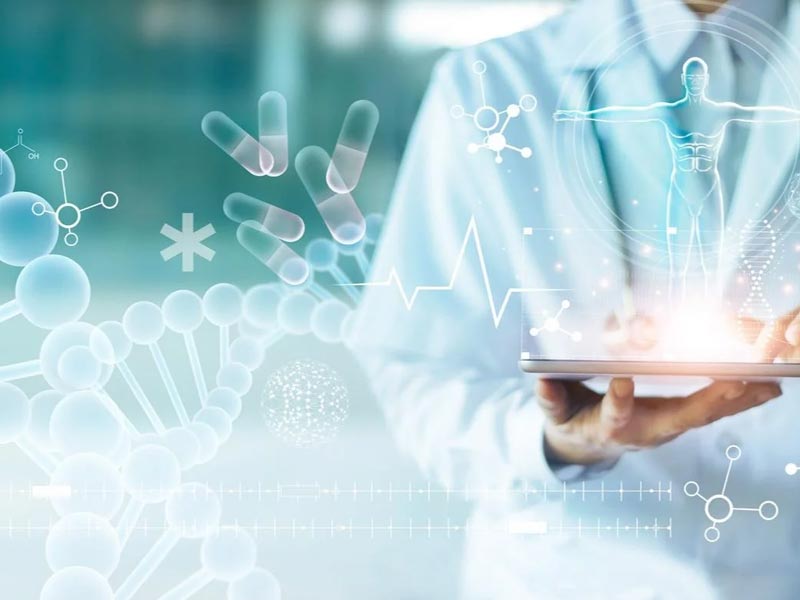
Purpose
Taking the recovery rate as the entry point, the relevant concepts and practices of the cleaning residue analysis method in the cleaning verification of drugs are studied, which provides a reference for the research of residue analysis methods for pharmaceutical manufacturers in cleaning verification.
Methods
By consulting the relevant literature, comparing and summarizing the relevant concepts and practices of the analysis method of cleaning residues of drugs, the various factors affecting the recovery rate of the analysis method were studied, and targeted suggestions were made on the basis of concept interpretation and literature analysis.
Results
The 21 literature on the analysis method of cleaning verification residues from 2015 to 2020 retrieved by CNKI were classified, and the recovery rate of the inspection method, the recovery rate of the sampling method and the literature that studied both at the same time were analyzed, and the process and key links of the wiping sampling operation in the study of the recovery rate of the sampling method were analyzed, and the two concepts of the recovery rate of the inspection method and the recovery rate of the sampling method were further analyzed and discussed. Conclusion: When studying the recovery rate of the cleaning verification residue analysis method, the sampling operation of the cleaning residue and the analysis of the residue solution should be considered at the same time, and it is recommended to conduct a methodological investigation based on the concept of the recovery rate of the analytical method. In cases where the risk of cross-contamination is greater, research on recovery rates is necessary; But when the risk of cross-contamination is relatively small, the study of recovery rates is of little significance. The study of the recovery rate of microbial residues should determine the depth and breadth of verification based on risk assessment in the context of product and equipment conditions.
Main Body
Collinear production is common for most pharmaceutical companies, so the Good Manufacturing Practice (GMP) stipulates that the basic requirements for pharmaceutical production management and quality control are to minimize the risk of contamination, cross-contamination, confusion, error, etc. in the pharmaceutical production process [1].As an effective measure to prevent contamination and cross-contamination, the cleaning of equipment after production requires cleaning verification to confirm the effectiveness of cleaning methods. Cleaning verification has always been the focus of drug production inspection, from the international and domestic inspections in recent years, but also found a lot of problems, many enterprises in the cleaning residue limit standards, some equipment did not carry out cleaning verification, cleaning methods and sampling methods and recovery rates and other aspects of different degrees of problems [2]. This paper takes the research on the recovery rate of cleaning residue analysis method as the starting point, consults the relevant literature, compares the relevant concepts and practices of inductive residue analysis methods, and studies various factors affecting the recovery rate of analytical methods.
1 Related Concepts
The methodological investigation of the analysis method of residues after cleaning, especially the recovery rate, is related to whether the cleaning is thorough, whether the cleaning method is effective, and whether the cleaning verification is successful.
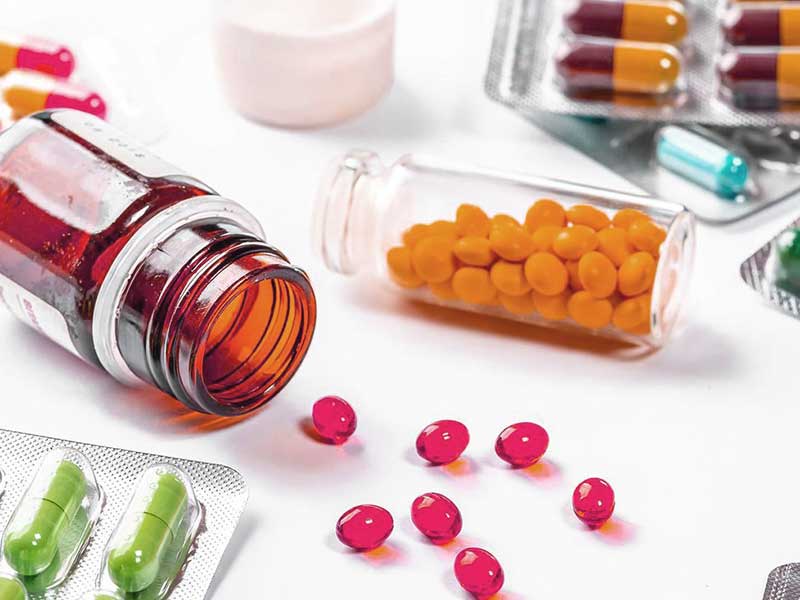
In this paper, based on the descriptions of relevant monographs and literature, GMP and related appendices, the three groups of concepts involved in cleaning verification analysis methods are analyzed separately. Among them, the concept of two recovery rates is related to the main point of this article, and the author puts forward his own views through the analysis of the description of the regulations – the two concepts are “merged into one” and unified into “analysis method recovery rate”. The author believes that the reason why there are two different recovery rate concepts is because the residue limit is confused with the two concepts of acceptable standards, so this paper analyzes these two concepts to provide support for proposing a unified analysis method recovery rate concept.
The concept of group 3, “cleaning object and cleaning reference object”, is the target of the analysis method, which is related to the accuracy of the analysis method, that is, the necessity of the recovery rate study, and the author analyzes and compares it together with the description of the relevant literature.
1.1 Sampling Method Recovery Rate And inspection Method Recovery Rate
There are two concepts of recovery rate in the cleaning verification, one is the recovery rate of the inspection method and the other is the recovery rate of the sampling method.
The “Guidelines for The Verification of Drug Production” [3] describe that “the recovery rate of the method can be combined with the recovery rate of the sample” and “the comprehensive recovery rate including the recovery rate of the sampling rate and the recovery rate of the inspection method is generally not less than 50%”. GMP[1] also has clear requirements for the concept of recovery rate, such as Article 143 “Cleaning verification shall take into account factors such as equipment usage, cleaning agents and disinfectants used, sampling methods and locations, and the corresponding recovery rate, the nature and limits of residues, and the sensitivity of residue inspection methods”; Article 24 of the GMP API Appendix [4] “Shall determine the recovery rate achievable by the analytical method. (The analytical method in the API appendix is the test method.)
This article distinguishes between analytical methods and test methods. See below for details). For the test method, the recovery rate indicates how close the measured result is to the true or reference value, that is, the accuracy [5]; Similarly, for a sampling method, the recovery rate is the degree to which the amount “taken down” by the sampling method is close to the actual addition amount. For the analysis of cleaning residues during cleaning verification, it is generally believed that the recovery rate of the inspection method should precede the recovery rate of the sampling method, because the amount of the amount taken down should be measured by a reliable inspection method. After the test method has been verified, the sampling method can be further determined. After obtaining the sampling method recovery rate, the product of the residue limit and the sampling method recovery rate is used as the acceptable criterion (in GMP[1], the specific meaning of the residue limit and the acceptable criterion is not specified. This article distinguishes between these two concepts. Details below), used to determine whether the current cleaning method is effective for cleaning the equipment after production.
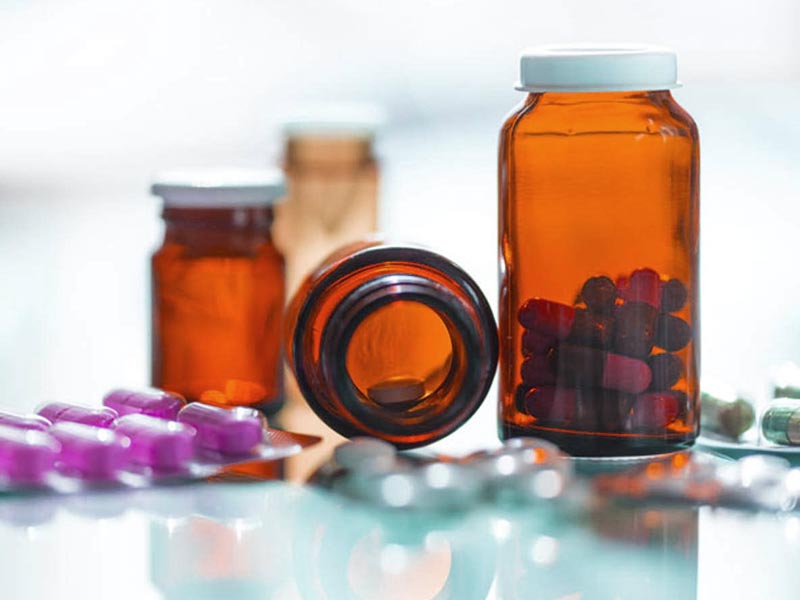
1.2 Residue Limits And Acceptable Criteria
There are two different concepts of residue limits and acceptable criteria in Chapter VIII of the GMP Validation and Verification Appendix [6], but they are not further elaborated. The author believes that the residue limit should be calculated after evaluation and analysis, and the maximum value (under unit area) that is allowed to remain on the surface of the equipment after cleaning and will not have a safety impact on the production of the next batch of products; Acceptable criteria are due to the limitations of the sampling method, i.e. the sampling method recovery rate, which is used after actual sampling to determine whether the equipment meets the value of the cleaning standard. The difference between the residue limit and the acceptable standard is the “residue limit× sampling method recovery rate described above = acceptable standard”. Therefore, studies of sample recovery rates are only meaningful if residue limits and acceptable criteria are distinguished; Only by taking into account the results of the sampling method recovery rate can the true residual situation be reflected [7]. This is also the problem of the imperfect recovery rate of the simple research test method.
1.3 Cleaning Objects And Cleaning References
There are two different concepts of cleaning objects and cleaning references in the GMP API Appendix [4], but they are not further elaborated. The author believes that the cleaning object is a product with greater activity or toxicity, less solubility and relatively more difficult to clean after evaluation and analysis of several collinear production varieties; The cleaning reference is the main object of cleaning and is the active ingredient in the cleaning object. For APIs, the cleaning object and the cleaning reference are conceptually equivalent, and both are the APIs; For the preparation, the cleaning object is the preparation variety, and the cleaning reference is the API used in the variety. In the literature I have reviewed, the vast majority of researchers use clean references as samples when simulating sampling. For example, Wang Bo et al. [8] When verifying the wiping recovery rate after cleaning the compound clozoxain tablets, the chlorzoxazone and acetaminophen in the compound were used as cleaning references, and the wiping recovery rate was obtained (72.9% and 93.5%, respectively); Only Chai Zhenping[9] and Wei Wei et al.[10] used the cleaning object as a test specimen for simulated sampling Use the clean object as a test sample for simulated sampling. The author believes that compared with the cleaning of APIs, it is worth exploring whether the excipients contained in the preparation affect the cleaning effect of the active ingredient, and even whether it affects the effect of wiping and sampling after cleaning.
2 Literature Analysis
Through a comparative study of 21 literature on the analysis method of clean verification residues from 2015 to 2020 retrieved by CNKI, it was found that it was mainly divided into three situations: First, only the recovery rate of the inspection method was studied, and the recovery rate of the sampling method was not mentioned, and there were 2 articles [11-12]; Second, only the recovery rate of the sampling method is studied, and the recovery rate of the test method is not mentioned, and there are 14 articles [8-10, 13-23]; The third is to study two recovery rates at the same time, with a total of five articles [24-28]. The following is a specific analysis of the above three situations.
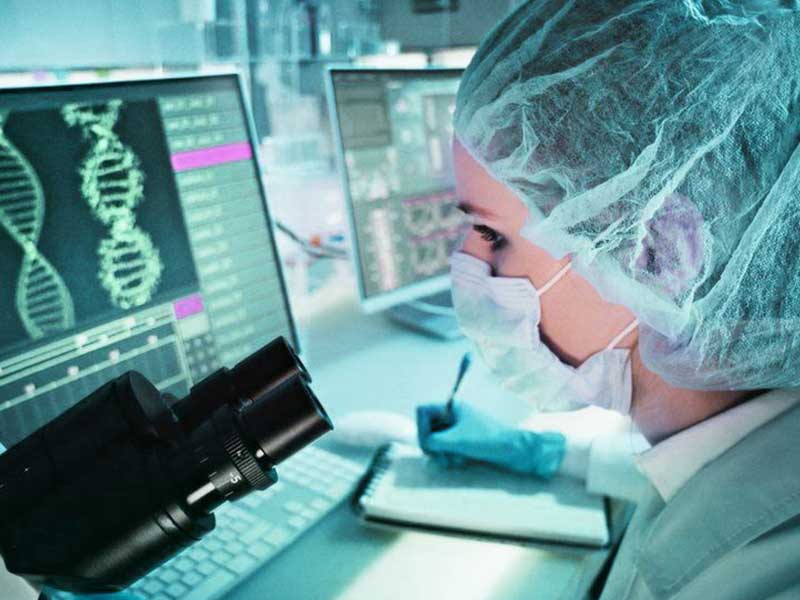
2.1 Research On The Recovery Rate Of Inspection Methods
The detection object of the cleaning verification inspection method is the cleaning residue after production, which is equivalent to the impurity determination of the drug in terms of the concentration of the test solution. Impurity determination is divided into two cases, namely quantitative analysis and limit analysis. Among them, the limit analysis does not need to examine the accuracy, that is, the recovery rate test when verifying the method[5], but from the research of the clean verification test method, all researchers are done in accordance with the verification requirements of quantitative analysis, not only the recovery rate test, but also the precision, linearity and range and other indicators are also examined. In the study of clean verification recovery rate, there was only 2 literature on the recovery rate of the inspection method. Hong Liping et al. [11] Used HPLC to study the recovery rate of Fenofact, the residue of Fenofact extended-release tablets after production and cleaning; The residue limit of fenofibrate was calculated to be 0.059 μg·cm-2, although the area of the simulated sampling was 100 cm2, but the recovery rate of the sampling method was not described. Cai Yalan et al. [12] used HPLC to study the recovery rate of econazole nitrate, the residue of econazole nitrate after production and cleaning; The residue limit of econazole nitrate was calculated to be 2.248 μg·cm-2, although the wiping solvent was mentioned as ethanol, but the study of the recovery rate of the sampling method was also not carried out, and the sampling recovery rate was directly set at 100%. The above studies are to dilute the control solution of the corresponding production variety to the corresponding concentration according to the requirements of the residue limit, and then add it to the control solution of the corresponding concentration level as the test solution for the sample recovery rate test. Although other indicators of the test method were verified together with reference to the Pharmacopoeia “Guidelines for Verification of Analytical Methods”[5], the recovery rate of the sampling method was not considered according to the GMP requirements from the perspective of cleaning verification, that is, the cleaning verification was insufficient because the simulated sampling process was not studied or introduced.
2.2 Research On The Recovery Rate Of Sampling Methods
Of the total clean verification recovery studies, only two-thirds of the literature was conducted on sampling method recovery rates. The types of products involved are tablets, injections, suppositories, creams, APIs and intermediates. The vast majority of test methods are HPLC, a few use UV [13-14], and there are pH and conductivity detection indicators [15]. In addition, total organic carbon (TOC) is also widely used in clean verification, but because it is a non-exclusive test method, it is not discussed in this article. The sampling method recovery rate is affected by factors such as the specific method of sampling, the operation of the sampling personnel, the suitability of the sampling tool, and so on. The sampling process is actually a comprehensive examination of the selection of the drug label, the solvent, and the operation of the sample taker, the transfer of residues to the drug label, and the dissolution (extraction) of the sample [29]. The following mainly takes the wiping method as an example to analyze the influence of various factors on the recovery rate of the sampling method during the whole process of simulated sampling.
2.2.1 How To Do Sampling
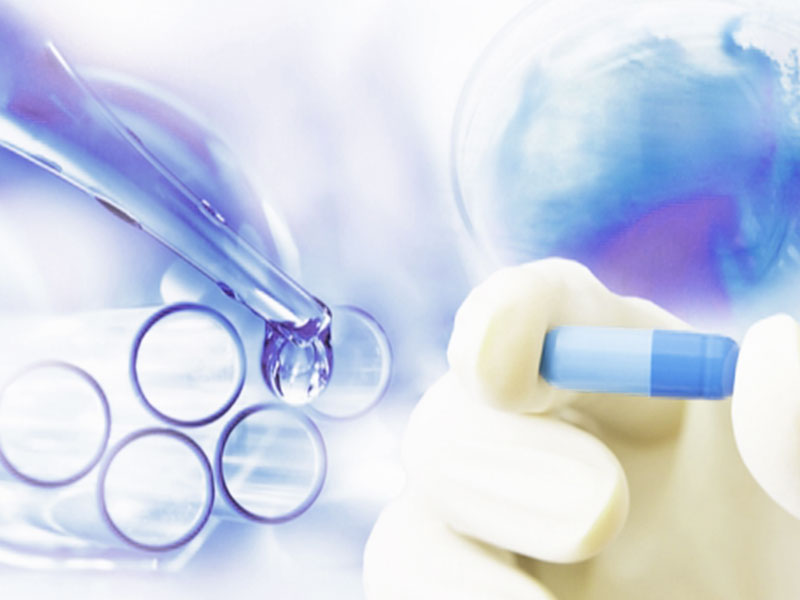
The vast majority of samples were taken using the wiping method, and some studies combined the elution method [15-17] and also used the elution method alone [13]. The use of the wiping method is mainly due to the direct sampling of residues that still adhere to the surface of the equipment after cleaning, which better reflects the cleaning state of the equipment than the elution method. The elution method can reach the inner surface of the equipment that is not easy to wipe directly, and can be used as a supplementary method for wiping. The author believes that the specific sampling method is not only related to the type of equipment (such as a long pipeline), but also to the nature, condition and production conditions of the product produced before cleaning. Taking an intermediate storage tank or reaction kettle as an example, the state of the product produced before cleaning is liquid, the production conditions are relatively mild, if it is cleaned immediately, it is completely possible to use the elution method to sample; Conversely, for complex equipment with more parts or molds in direct contact with the product, if the production product is solid particles, or even a largely viscous extract, the wiping method is a more preferable sampling method.
2.2.2 Simulate The Material Of The Sampling Plane
Since the vast majority of production equipment is made of stainless steel, the material used in the wiping method is basically stainless steel. Some researchers have studied the recovery rate of sampling methods for different equipment materials. He Peilan[17] conducted a study on the wiping and washing recovery rate of the planes of enamel and stainless steel, and found that the recovery rate of enamel was higher than that of stainless steel; Zhang Zhen et al. [18] studied the recovery rate of wiping sampling methods of four different materials (including stainless steel, plexiglass, tempered glass, and PTFE) planes, and the results showed that plexiglass was the lowest and stainless steel was the highest; Overseas inspections of Chinese enterprises have also mentioned that the material of the sealant ring needs to be verified by the sampling recovery rate [2]. Therefore, when cleaning verification, it is necessary to comprehensively consider the various materials that the product comes into contact with in production, especially the equipment valves, auxiliary pipes and parts that are easy to be in the cleaning blind spot.
2.2.3 Verify The Amount Of Solution And The Number Of Tests
If the amount of active ingredient in the test solution prepared after wiping the sampling location of each production equipment selected is less than the acceptable standard (not the residue limit), the cleaning method used is effective for the equipment or equipment chain. When sampling method recovery test, the amount of validation solution added to the simulation plane should be the amount of the residual limit. In actual research, there are 2 ways to verify the amount of solution: First, there is only one value; The second is the amount of 3 different gradients around the residue limit, and the residual limit is included in this gradient range (the middle gradient is the residual limit). Judging from the domestic inspections in 2017-2018, there are problems such as “sampling recovery rate verifies that the concentration of the solution is not within the acceptable range” [2]. Just like the test method recovery test, the sampling method recovery rate must be tested multiple times. However, most researchers did not use the design method of pharmacopeia testing method recovery.
Regardless of how the amount of verification solution is set, the number and methods of tests on the recovery rate of the sampling method are various, and some only 1 group of tests are carried out, and the number of tests is 3 [19], 6 [20], 9 [21]; Some are designed for 3 groups of tests, each group has 3 [9-10, 13, 16-18], 6 [22-23] times. Therefore, the total number of trials varied greatly, from 3 to 18. However, the author considers that if the above two methods (1×6, 3×3) are the same as the number of recovery tests in the Pharmacopoeia “Guidelines for Verification of Analytical Methods”[5], they can be measured 6 times at the same concentration or 3 times at 3 different concentrations.
2.2.4 Specific Operation Process (Coating, Drying, Wiping And Melting)
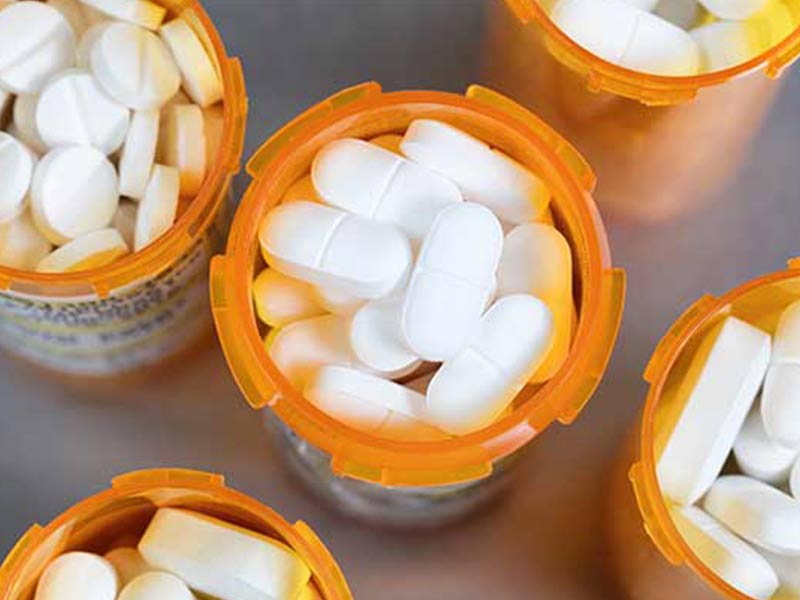
1) Simulate Sampling Area, Verify The Volume Of Solution And Coating Method
The simulated sampling area in the literature is basically divided into two situations, one is 10×10 cm2 and the other is 5×5 cm2. The researchers did not explain this. The author believes that the sampling area should be related to the volume of actual production equipment, and the sampling area of large-scale production equipment should be larger, so as to be more representative. In addition, it is also related to the volume of the test solution. If the sample area is large and the test solution volume is small, the solution is not evenly distributed on the whole plane.
In some literatures [9,18,22-23], the volume of solution is very small, only 0.1ml, so it is relatively difficult to accurately spread such a small amount of solution evenly over a relatively large area.
As for how the solution is evenly distributed on the sampling plane, no researchers have described it in detail, and all use a coating method, some of which are “coating” [10,16,19-20], some are “drip” [18,22-23] or “point” [9], some are “injection” [21], some are “dumping” [17]. The author suggested the following methods: Take 5×5 cm2 sampling area, verify the solution volume 1 mL as an example, 1 mL at room temperature is about 20 drops (about 1 drop per cm2), matrix point addition can be used, using a quantitative pipette gun drop by drop on the plate, using the gravity of the drops and the tension in the plane naturally spread.
2) Verify How The Solution Is Dried
The solution should be dried before sampling. Drying is done by drying naturally [9,14,18,21,23], blowing drying [20,22] and drying[19]. The author believes that the drying method used should be related to the drying method of the actual cleaning equipment. If there is no drying operation after the equipment is cleaned, it can be dried naturally; If compressed air is used to dry, the air dryer can be selected (pay attention to the wind speed); If it is heated or dried with waste heat, it can be dried. In addition, the drying method and the sampling method recovery rate also has a certain relationship, different degrees of drying method so that the residual material and the surface of the equipment produce different contact force, residual substances in the cleaning is still adhered to the surface of the equipment, if the wiping force is not enough, the sampling recovery rate will be affected. This can also be seen from the description of the problem found by overseas inspection and regulatory agencies on Chinese enterprises from 2015 to 2018 – “consistency of sample drying conditions in wiping determination and drying conditions in actual processes”[2].
3) Wipe The Tool, Wipe The Solvent And The Timing And Method Of Wiping
Most of the wiping tools are cotton swabs, and a few use non-fat cotton [22-23] or non-woven cotton [10]. Most use a cotton swab to wipe a sample plane, while others use two cotton swabs or cotton balls [14, 18-19, 22-23], or even three cotton swabs. The number of swabs used is related to the flat area, the amount of verification solution, and the amount of adsorption of the swabs. There are many kinds of solvents for wiping, all depending on the dissolving nature of the residue. But the author is not concerned with the type of wiping solvent, but with the amount. Literature description is mostly that after the wiping tool adsorbs the solvent, the excess solvent is squeezed out, because the solvent is more, but the solvent that has dissolved the residual substance is separated from the cotton mass and still remains on the plane when wiping, resulting in a low recovery rate; On the contrary, there is less solvent, the residual substance cannot be fully dissolved, and the recovery rate is still low.
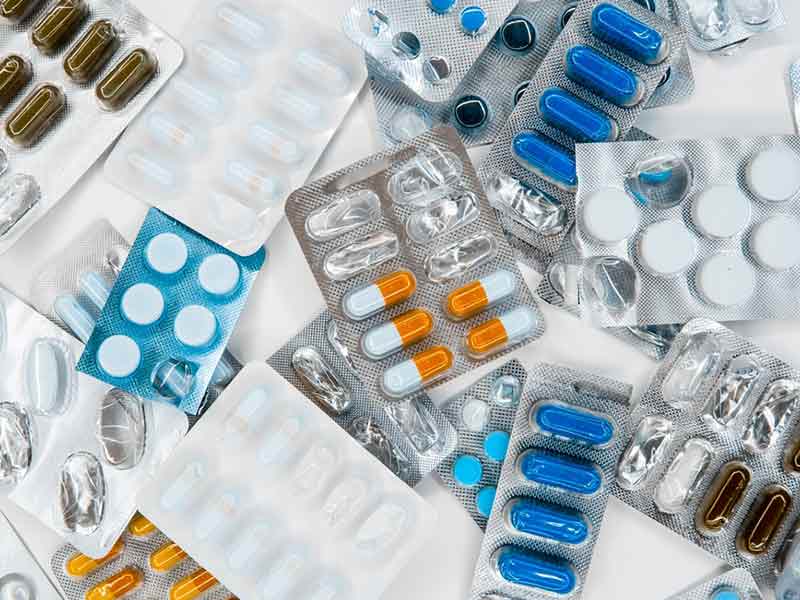
Just as the researchers did not pay attention to the actual amount of wiping solvent, the researchers also did not pay attention to the timing of the wiping operation. The cleaned equipment will not then arrange subsequent production, GMP stipulates that the impact of the storage time limit after cleaning the equipment should also be considered when cleaning and verifying, so after the verification solution is dried on the plane, it is not advisable to wipe the sample immediately, especially when the product stability is poor or the microbial residue is verified synchronously. The author suggests that at least during the simulation sampling, the time from drying of the verification solution to the actual wiping should meet the requirements of the cleaning procedure for the storage time limit after the equipment is cleaned. The wiping method is generally to wipe the snake-like curve back and forth in the vertical and horizontal directions of the sampling plane, so that the wiping tool is in full contact with the entire sampling surface. In order to improve the recovery rate, some researchers have added two diagonal directions perpendicular to each other on the basis of the above operations [18]. In addition, you should also pay attention to the strength and speed when wiping, because the force is large, and the solvent is easy to be extruded; The speed is fast, the solvent has a short contact time with the residue, and it is not enough to achieve the purpose of sampling.
4) Transsolution Is Made Into Test Solution
After wiping and sampling, the residue on the wiping tool needs to be dissolved with a diluted solvent to make the final test solution. There are 2 questions worth considering: First, whether the amount of wiping solvent adsorbed on the wiping tool has an impact on the volume of the diluted solvent when preparing the test solution, that is, whether the volume of the test solution is accurate; Second, if the wiping solvent is different from the diluted solvent, whether the misclubility problem is considered when the wiping is then transsold into a test solution, and whether emulsification will occur. For example, Xu Xingya et al. [16] used chloroform as the wiping solvent when verifying the cleanliness of the emulsifier, and methanol as the dilution solvent when preparing the test solution; Heperlan [17] used tetrahydrofuran as a wiping solvent in the study and methanol aqueous solution as the dilution solvent when preparing the test solution.
2.2.5 Sampling Personnel
Based on the influence of the sampling personnel on the recovery rate of the sampling method, most of the studies were based on the operation of 1 sampler to exclude the differences in operation between different operators, especially the different forces and speeds during wiping operations. However, considering the actual participation of multiple people in the sampling operation and the reproduction of the impact and effect of different personnel on the recovery rate of the sampling method, it is recommended to regularly confirm the reproducibility of the sampling method recovery rate of different sampling personnel. Acceptable standards are calculated according to the recovery rate of different personnel or implemented according to the minimum recovery rate.
The results of the simulated sampling described above (i.e., the recovery rate of the sampling method) are used to calculate the acceptable criteria, and the results of the actual sampling are used to determine the effectiveness of the cleaning method (i.e., the conclusion of the cleaning verification). Therefore, whether it is simulated sampling or actual sampling, the author does not recommend that the production department, especially the cleaning personnel, take the sample, but should be taken by the personnel of the quality assurance department to avoid the contradiction of being both an athlete and a referee. Cleaning is done by production personnel and sampling is done by QA personnel, which also helps to investigate when abnormalities occur. For example, when the results of the three actual wipes are different from each other during cleaning verification, and the RSD at the time of simulated sampling is small, it indicates that the provisions of the cleaning method lack operability or the cleaning operation lacks reproducibility.
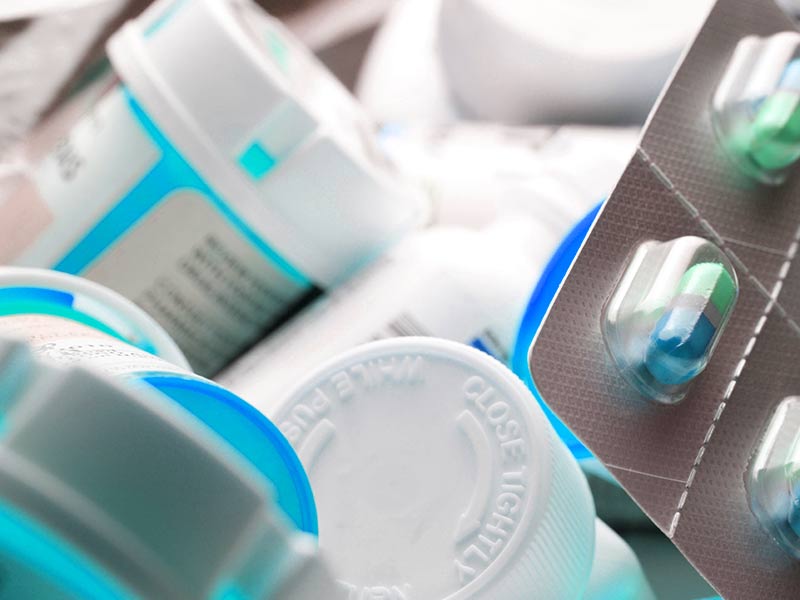
2.2.6 RSD Of Sampling Method Recovery Rate
Due to the relatively low standard for recovery of sampling methods (recovery rate >50%, RSD >20%[3]), the results of each study met these criteria. Although the average was calculated by each researcher, when the acceptable criteria were finally calculated, it was not the average, but the minimum. Compared with the minimum requirements for the recovery rate of the sampling method, the author believes that the size of the RSD is more important. The large RSD indicates that the reproducibility of the wiping sampling operation is poor, and the value of the recovery rate is inaccurate, which cannot accurately reflect the residual situation. The acceptable criterion calculated from the final minimum value is only one of the worst conditions for cleaning verification. Therefore, to study the recovery rate, it is necessary to start from the specific operation process of the above “2.2.4” analysis to improve the reproducibility of the operation and minimize the RSD. The acceptable standard obtained in this way can reflect the real situation of the residue, so that the actual wiping result is more accurate in judging whether it meets the acceptable standard.
2.3 Simultaneous Study Of The Recovery Rate Of The Inspection Method And The Recovery Rate Of The Sampling Method
2.3.1 Recovery Rate Of Inspection Methods
Similarly with “1.3”, of the seven literatures, including only two for the recovery rate of the test method, only one article added the corresponding blank mixture excipient to the control solution [24], that is, the test solution that simulated the recovery rate of the cleaning object preparation test method. The other 6 articles [11-12, 25-28] were all tested on the recovery rate of the cleaning reference material. In these 6 literatures, except for 2 research objects are APIs [27-28], the other 4 research objects are preparations, from the pharmacopoeia on the verification requirements of the test method recovery rate [5], these 4 research objects are debatable, without considering the possible impact of excipients. It is recommended to fully consider the impact of excipients on the wiping recovery of the active ingredient, and conduct a full risk assessment, and decide whether to use a cleaning object or a cleaning reference to prepare the test solution for the recovery rate test of the test method according to the results of the assessment.
2.3.2 Sampling Method Recovery Rate
The sampling method recovery test is also basically the same as that described in “2.2”. However, some operation steps and results are worth noting, for example, when Nie Wei et al. [24] when coating the verification solution, the solution with a concentration of 6.013 μg·mL-1 is “sprinkled” on 8 areas of 2 groups with the same area divided by 1 stainless steel plate, and how to ensure that the verification solution is evenly distributed on 16 areas is not described in detail. Feng Xiaohong et al. [26] When wiping, in addition to the conventional serpentine curve wiping in both directions, a spiral curve wiping starting from the center of the plane was also added. Shi Cheng[27] Conducted a study on the wiping recovery rate of 3 people after the production and cleaning of sildenafil citrate, and each person performed 3 operations, the average recovery rate was 98.63%, RSD = 0.33%; The recovery rate of the test method done at the same time is 99.95%, RSD = 0.09%, and the relative deviation of the 2 recovery rates <1%, which shows that there is almost no sample loss in the sampling process, including the personnel have almost no impact on the sampling operation. In order to avoid secondary contamination of the equipment caused by wiping the solvent, Xu Zihang [26] did not wet the swab with solvent when wiping.
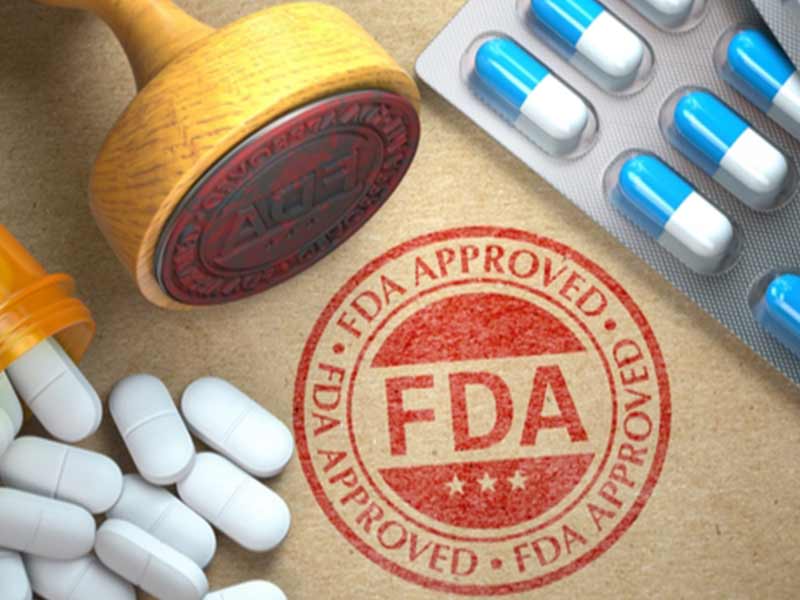
2.3.3 Differences In 2 Recovery Rates
From the entire literature, the analysis of clean residues is a trace or trace analysis, according to the pharmacopoeia “Analytical Method Verification Guidelines” in the sample to be measured in the content of the sample and the recovery rate limit, the lower the content, the more relaxed the range of recovery limits [5]. However, from the above literature, the recovery rate of the inspection method is between 98% and 100%, and the accuracy is very high, that is, most of the test products studied are not cleaning objects, but cleaning references, and the influence of factors such as excipients is not considered, and the recovery rate of the inspection method is relatively high. Although individual studies have shown that the recovery rate of the sampling method is relatively consistent, the impact of different sampling personnel on the final result is still the greatest, so Nie Wei et al. [24] believe that after the replacement of sampling personnel, the sampling method recovery rate should be re-verified.
3 Discuss
3.1 Concept Of Recovery Rate
From the above analysis, the author believes that the study of the recovery rate of the test method is debatable. The reason why there are two different concepts of recovery rates is that the understanding of “method” and especially “method research object” is different. The test method is attached to the sampling method (the recovery rate of the test method is included in the recovery rate of the sampling method), and the study of the recovery rate of the aforementioned test method precedes the method of sampling method recovery is worth exploring.
In this regard, the author explains from three aspects:
First, the above point of view appears conceptual problems, high accuracy of the test method (that is, pharmacopoeia and GMP “analysis method”) research object is the drug, which is the essential requirement of drug safety, efficacy and quality controllability; However, the test method of clean verification described in this article is not the object of study of the drug, but the residue of the drug.
Second, consider different angles. Even if the subject of the recovery rate of the clean verification test method is a drug residue, most researchers study the active ingredient solution with a residue limit level, rather than the true cleaning object. This is due only from the perspective of “testing” and not from the perspective of “analysis”. As the object of study of the analysis method, according to the description of any “analytical method” of the first and second parts of the pharmacopoeia, the format of one part is “preparation of the sample solution”, and the format of the second part is “the solution of the sample”. Obviously, the description of one is more appropriate. For the “analytical method”, the test solution not only includes the dissolution of the study object, but also includes the process of extraction, dissolution, and transfer. The author believes that the sampling of clean verification is equivalent to extraction, dissolution and transfer.
Third, the question of whether to participate in calculations. Judging from the situation of “2.2” and “2.3” in this paper, when the final cleaning verification conclusion is determined, the recovery rate of the inspection method is not involved in the calculation, and only the recovery rate of the sampling method is involved in the calculation.
Therefore, the author believes that the study of the recovery rate of the sampling method has included the recovery rate of the test method, combined with the coverage of the analysis method mentioned in the pharmacopoeia and the overall process of the sampling recovery rate operation, the recovery rate of the inspection method is only one link in the recovery rate of the sampling method, so it is recommended to adjust it to the concept of “analysis method recovery rate” to be more accurate.
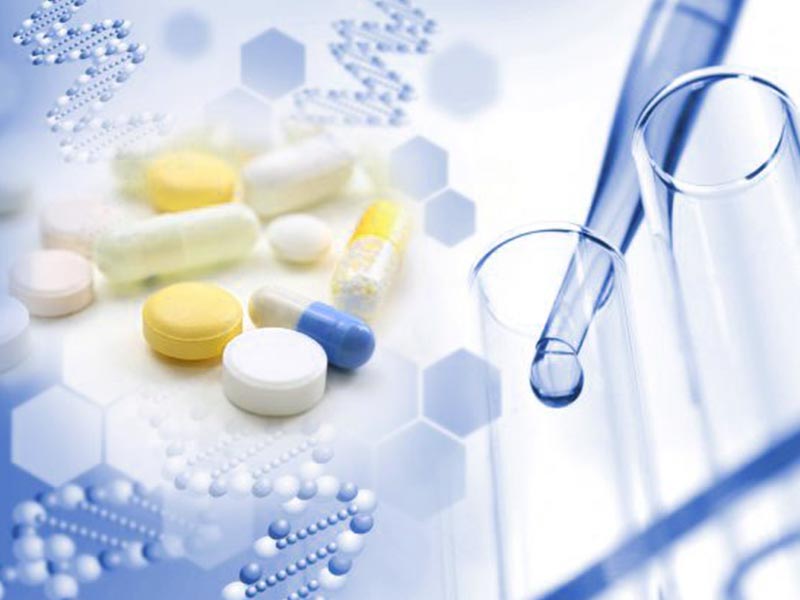
3.2 The Necessity Of Recovery Rate Research
In view of the fact that the concept of “analytical method recovery rate” has been proposed in this paper, the recovery rate discussed below refers to the sampling method recovery rate or the analytical method recovery rate.
Some drug hazards occurring at home and abroad, such as the recall of cholestamine resin in the United States and the methotrexate drug hazard incident at Shanghai Hualian Pharmaceutical Factory [30], are caused by high-risk products (the activity or toxicity of the products to be cleaned is much greater than that of subsequent production products). Therefore, for products with very different residue limits, the author believes that it is best not to produce collinearly; Even in collinear production, all varieties are grouped according to various factors such as activity/toxicity, dosage, ease of cleaning, and batch size, using different cleaning methods, and then cleaning and verification separately. In this case of clean verification, a study of the recovery rate is necessary.
For products with little risk of cross-contamination, when the residue limit of collinear production varieties is generally high, the author suggests that the verification index of the determination of limited impurities can be used to examine the analysis method, and there is no need to study the recovery rate. Because in addition to the relatively high recovery of RSDs (high RSD indicates low accuracy) used in cleaning verification, there are also different orders of magnitude of residue limits due to the reference of different safety (adjustment) factors [31] when assessing the residue limits. Thus, the residue limit is only a percentage difference compared to the acceptable criterion multiplied by the recovery rate, and negligible compared to the difference in order of magnitude.
3.3 Necessity Of Microbial Residue Recovery Testing
The recovery rates of the above cleaning verification are only analyzed from the perspective of chemical residues, which also include detergents and microorganisms, especially for sterile pharmaceuticals, microorganisms or bacterial endotoxin residues. At present, there is not much research on the recovery rate of microbial residues in the industry. Wang Guiyan et al. [32] used the cotton swab wiping method for the monitoring of microbial residues for equipment cleaning verification, and conducted method suitability tests on aerobic bacteria, molds and yeasts, as well as control bacteria (including recovery rate tests, with results between 0.5 and 1); However, Yang Jian [15] believes that because microorganisms do not have relative stability like chemical residues, but continue to multiply and change over time, the wiping operation will also cause damage to the activity of microorganisms, and it is better to study the microbial situation of the final rinse water, so the research on the recovery rate of wiping samples is of little significance.
The author believes that clean verification is a holistic concept, chemical residues and microbial residues echo each other, on the one hand, the less chemical residues, the less likely the microorganisms are to survive and reproduce; On the other hand, the cleaning process is often accompanied by disinfection or even sterilization, and many cleaners have a disinfectant effect. Therefore, for how to carry out the verification of microbial residues (not only the recovery rate), the depth and breadth of the verification should be determined according to the risk assessment based on the specific situation of the product and equipment.
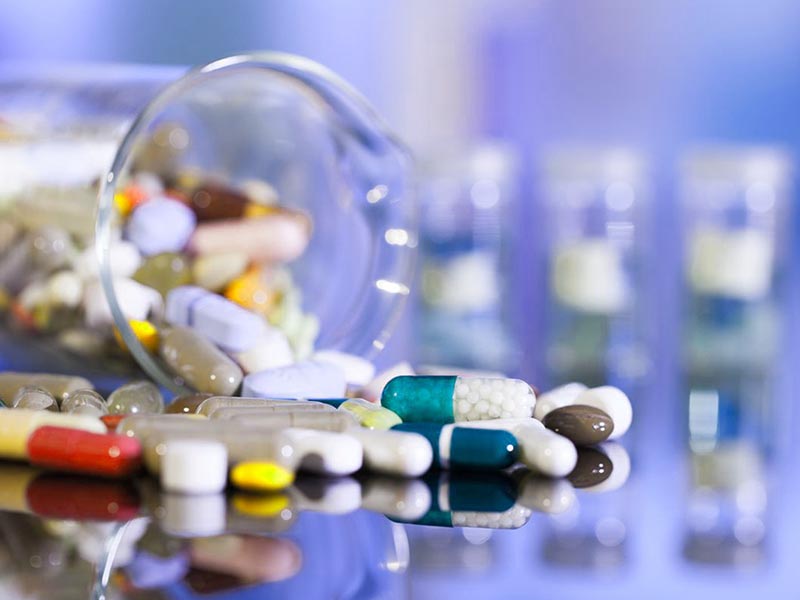
4 Epilogue
The newly revised Drug Administration Law regards risk management as one of the three principles of drug management, clean verification is an important measure to effectively reduce the risk of cross-contamination in the process of drug production, and the recovery rate is an important project for the research of clean verification residue analysis methods. Through the analysis and comparison of the concepts related to the residue analysis method in the cleaning verification, this paper sorts out the 21 literature retrieved by CNKI from 2015 to 2020, conducts a statistical analysis of the classification of the three situations involving the verification of the analysis method, and focuses on the process and key links of the wiping sampling operation, and puts forward the following suggestions: When studying the recovery rate of the cleaning verification residue analysis method, the sampling operation of the cleaning residue and the analysis of the residue solution should be considered at the same time. It is recommended to conduct a methodological examination based on the concept of analytical method recovery rate. In cases where the risk of cross-contamination is greater, research on recovery rates is necessary; But when the risk of cross-contamination is relatively small, the study of recovery rates is of little significance. The study of the recovery rate of microbial residues should determine the depth and breadth of verification based on risk assessment in the context of product and equipment conditions. The above views put forward in this article are derived from the author’s understanding of the laws and regulations in the practice of inspection work and the analysis of the literature currently retrieved, and the author intends to use this to throw bricks and jade, ask industry experts to criticize and correct, and provide reference for the drug cleaning verification work to further clarify the concept and enhance the representativeness of operations, thereby reducing the risk of pollution and cross-contamination in drug production.










